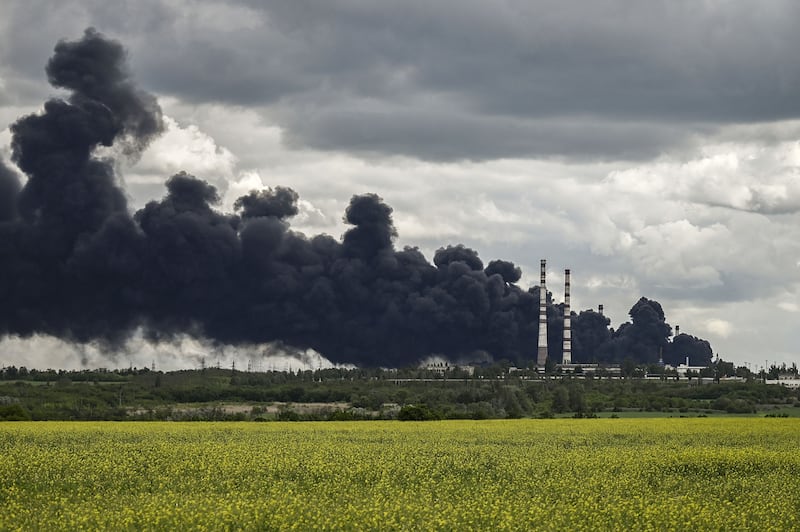Oil prices recorded a strong gain in the first quarter of the year amid Opec+ output cuts and rising fears of supply disruption due to geopolitical risks.
Brent, the benchmark for two thirds of the world’s oil, rose by about 13 per cent in the first three months of 2023. West Texas Intermediate, the gauge that tracks US crude, gained about 16 per cent during the same period.
“Risk premia associated with the Russia-Ukraine war have resurfaced, with Kyiv ramping up its attacks on Russian energy infrastructure,” Fitch’s BMI research unit said.
“This, combined with the ongoing supply risks in the Middle East and cutbacks by Opec+, has fuelled healthy price gains,” BMI said in a research note on Thursday.
Oil prices gained about 2.6 per cent this week, up until Thursday's close. The US markets are closed today due to the Good Friday holiday.
US crude inventories, an indicator of fuel demand, expanded by 3.2 million barrels in the week that ended on March 22, according to the US Energy Information Administration.
However, the increase was much smaller than the 9.3-million-barrel stock build projected by the American Petroleum Institute earlier.
Total petroleum stocks grew by 1.3 million barrels last week while distillate inventories fell by 1.2 million barrels, the EIA data showed.
Higher stocks indicate lower demand in the market. Demand has been affected by growing economic instability globally.
Looking ahead, the balance between supply and demand in the market will depend on decisions taken by the Opec+ alliance.
The group recently extended voluntary cuts of 2.2 million barrels per day into the second quarter to stabilise oil markets.
It will hold an online meeting on April 3 to review oil market conditions. A full ministerial gathering will be held in Vienna in June.
“We anticipate a gradual increase of supply over the [second half of this year], accelerating into 2025,” BMI said.
“However, the pace at which the deal is unwound is the key ‘known unknown’ for our forecast next year.”
Another key factor to monitor will be the impact of the Russia-Ukraine war on oil supply.
Ukraine has conducted drone strikes on more than a dozen Russian refineries over the past three months, with the more recent attacks affecting a large chunk of Moscow's processing capacity.
Kyiv’s drone strikes caused a fire at Rosneft's largest refinery on March 13. There have been strikes on two oil terminals, four oil and fuel depots and 14 refineries so far this year.
While the damage at most energy complexes has been repaired quickly, between 600,000 to 900,000 bpd of refining capacity is set to remain offline for “several weeks to months”, Japanese lender MUFG said in a report last week.
“Given the general lack of transparency, it is also hard to estimate the duration of these outages,” BMI said.
“Nevertheless, the upside pressure on Brent has been limited so far. All else equal, this should increase the demand for crude outside of Russia, as other refiners raise their run rates to offset the loss."
Meanwhile, money managers have been increasing their investment in oil futures contracts, indicating a significant bullish sentiment in the market.
“Since hitting an 11-year low at 170 million barrels last December, they have steadily increased their exposure to WTI and Brent crude contracts,” said Ole Hansen, head of commodity strategy at Saxo Bank.
In the week ended March 19, net buying of contracts exceeded 100 million barrels, resulting in the net long position hitting a five-month high of 509 million barrels, he said.






